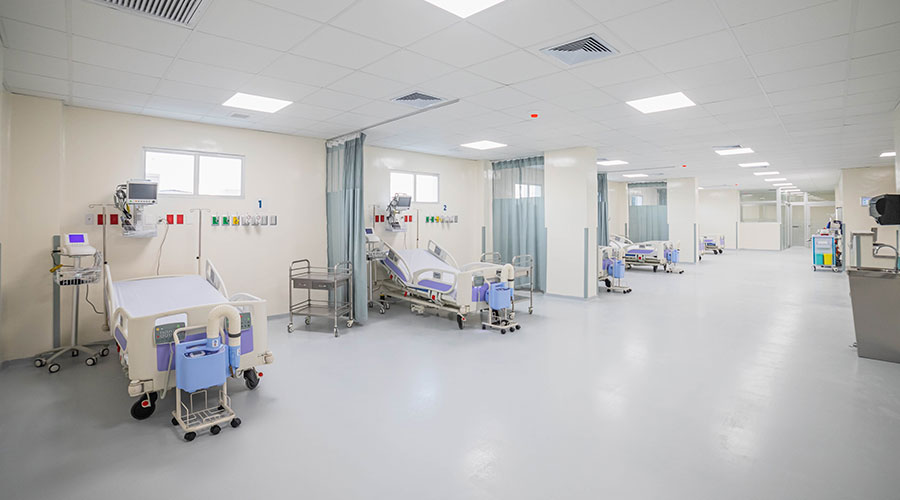Physicians and nurses care for patients and administer treatments. Pharmacists measure and deliver medications. Lab techs perform tests using intricate equipment. Administrators ensure the facility is running smoothly. Healthcare facilities tend to have staffs of thousands, most of which the roles are easy to understand- save the biomedical engineer.
Seen as coldly logical, technical, and concerned primarily with manufacturing, engineers seem to be out-of-place in hospitals, clinics, and other care facilities, but biomedical engineers are indispensable members of a healthcare team. This guide will help patients and others understand the role of the biomedical engineer in healthcare as well as his or her specific duties in healthcare facilities.
What biomedical engineers do
Like any engineer, a biomedical engineer is primarily concerned with solving problems; thus, specializing in the fields of biology and medicine, biomedical engineers focus on analyzing challenges and designing efficient and effective solutions to improve quality of patient care. Because healthcare systems are vast and complex, biomedical engineers can work on any of a number of necessary tasks, such as developing artificial organs, building machines to aid in diagnosis, providing technical support for medical technology, training clinicians in machine use, and even studying the engineering aspects of biological systems, like the endocrine system, in humans and animals.
However, most biomedical engineers claim a concentration in specific professional field. Biomedical engineering studies are broad, encompassing biology, chemistry, math, physics, computer science, and more, so biomedical engineers can apply any of this knowledge to benefit the medical community. For example, one biomedical engineer might spend a career devoted to developing software to run complicated medical instruments, while another biomedical engineer applies biology and chemistry to craft new drug therapies. Some of the newest efforts of biomedical engineers include using biomaterials (cells and tissues) to solve problems. Bioprinting is a prime example of biomedical engineers’ successes.
Why biomedical engineers are vital to care teams
Generally, biomedical engineers enjoy diverse career opportunities, but each application of biomedical engineering is vital to the success of a healthcare facility. From research of bodily systems and development of medical devices to maintenance of facility networks and instruction on treatment procedures, biomedical engineers keep hospitals, clinics, and care facilities running and helping patients. Though biomedical engineers rarely interface with those who require care, they are at least as responsible for patients’ good health as a clinician, for without the technologies and procedures carefully shaped and studied by biomedical engineers, western medicine would enjoy little medical progress.
How to become a biomedical engineer
Biomedical engineering influences the administration of healthcare and the function of facilities around the world, which is to say the field requires workers to be extensively trained and extremely knowledgeable. Those interested in becoming biomedical engineers tend to be proficient in math and science from a young age and devoted to logical problem-solving ― though a passion for helping people is also valuable in this field.
At the very least, biomedical engineers require a bachelor degree in biomedical engineering. Courses in biomedical engineering programs include a bevy of chemistry, to include organic and biochemistry and molecular biology, as well as an ample amount of mechanics, including mechanical drawing and drafting. This education qualifies biomedical engineers for entry-level positions at healthcare facilities.
Advanced education, such as master’s and doctoral degrees, help to further specialize biomedical engineers. Certain fields, such as neuroengineering, nanotechnology, and pharmacology require dedicated study to apply to biomedical engineering, and typically only in advanced degree programs can biomedical engineers engage with such subjects. Seeking a biomedical engineering online degree helps engineers continue working and gaining field experience while refining their knowledge and qualifying them for higher positions in healthcare facilities.
For their work, biomedical engineers tend to earn an above-average salary; nationally, the median earnings for biomedical engineers is about $86,000, but in some areas, that number exceeds $100,000. Plus, as sought-after trained professionals, biomedical engineers can expect outstanding benefits, including health and dental insurance as well as retirement plans. Still, the financial compensation for the work pales in comparison to the good done for the greater population.
The true reward for most biomedical engineers is the opportunity to impact millions of people around the world with advanced treatments that save lives and improve lifestyles. Though engineers must be calculating to complete their work, biomedical engineers are obviously far from cold ― they are as warm-hearted as any professional in healthcare.
Jackie Roberson is a content coordinator with Seek Visibility.

 Alleged Ransomware Administrator Extradited from South Korea
Alleged Ransomware Administrator Extradited from South Korea Design Plans Unveiled for New Intermountain St. Vincent Regional Hospital
Design Plans Unveiled for New Intermountain St. Vincent Regional Hospital Ground Broken on New Pediatric Health Campus in Dallas
Ground Broken on New Pediatric Health Campus in Dallas Pre-Construction Strategies for Successful Facilities Projects
Pre-Construction Strategies for Successful Facilities Projects Geisinger Finds Success with Violence Prevention Efforts
Geisinger Finds Success with Violence Prevention Efforts